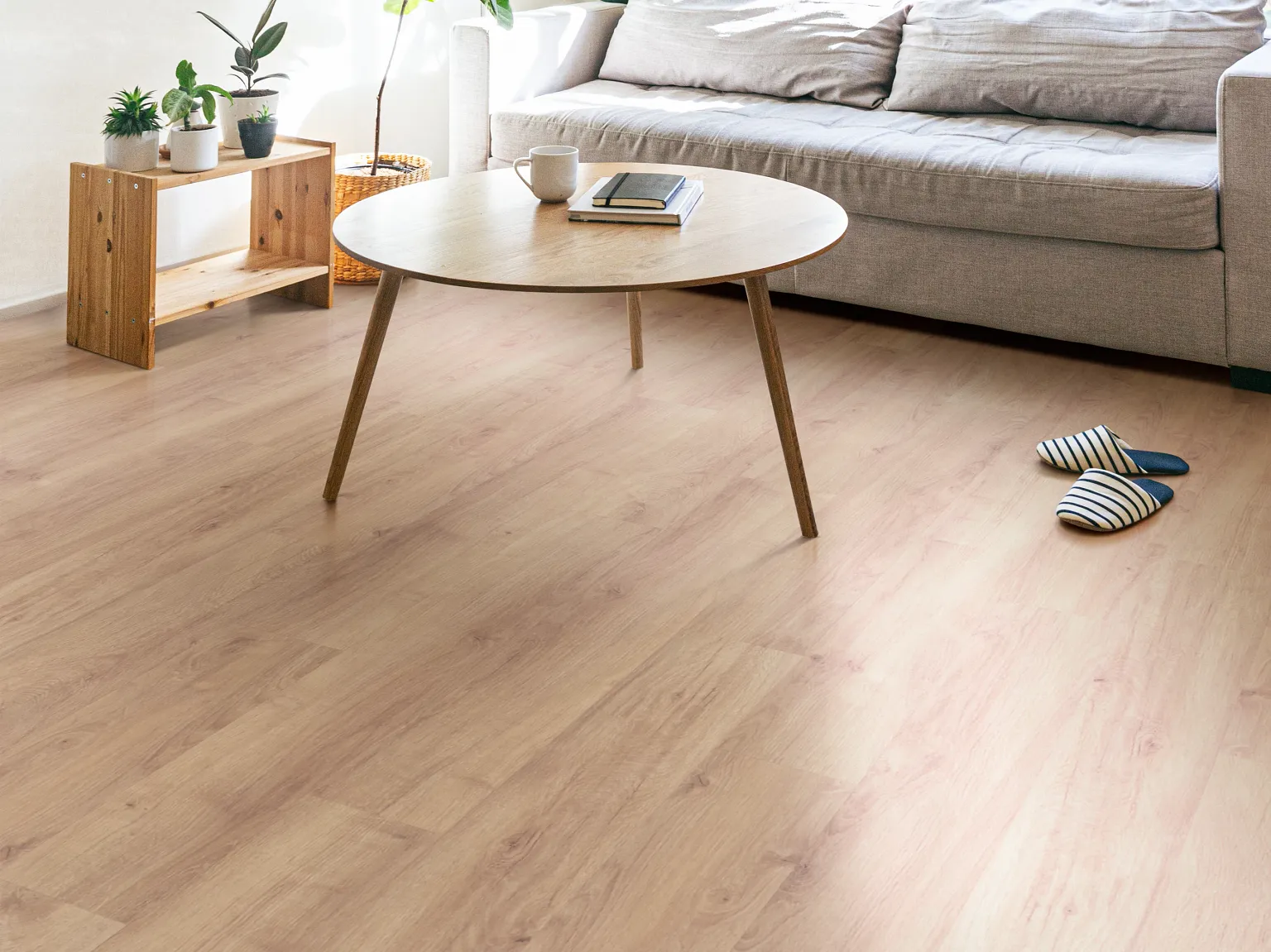Repairing Scratched and Buckled Laminate


Laminate flooring, a popular and versatile floor solution for today’s busy homeowners and lifestyles, can withstand a lot of use and abuse. On occasion, it can be damaged by pets, kids, or moisture. If you have laminate floors, or are considering installing them, read on for some tips and tricks to repairing them yourself — and knowing when you need professional help.
Fixing Scratches
Minor damage, such as scratches from furniture or foot traffic, is easy to repair with a repair kit that can be purchased in the flooring aisle of most home improvement stores. Bring a sample piece of your damaged floor along to the store to make sure you get the right kit for the job. Most kits come with a pencil, marker, or waxy crayon but some also include putty and varnish. Some kits recommend that you also use a putty knife, fine-grit sandpaper, and acetone, which are all sold separately.
Before beginning, test out the repair kit color on a scrap piece of flooring, or in an inconspicuous location to make sure that it’s a good match. Next, clean the area that you are repairing with a recommended cleaner and allow it to dry. If you are using a pencil, marker, or crayon, apply it to the damaged area in layers, as necessary, to get a result that matches the surrounding floor.
If you are using putty to repair a deeper scratch, follow the instructions for mixing, then apply with a putty knife, making the repaired area level with the rest of the floor. Allow the putty to set, sand gently with fine grit sandpaper, and clean with acetone, if recommended. Finally, apply the varnish, if included, to the repair, being sure to feather the edges into the flooring so as not to call attention to the scratch. After the varnish has dried, you can lightly sand again to ensure that everything is level and viola! You’re done!
Buckled Floors
Sometimes laminate floors will buckle, due to moisture or temperature fluctuations. Before repairing, diagnose why this happened in the first place. **If you know for certain that your flooring was damaged by flooding, a leak, or a problem with the subfloor, call a professional to help you address the issues.** In most cases, buckling is caused by not properly acclimating the flooring to the environment prior to installation, or not allowing sufficient space for expansion. Regardless, the repair process is the same. First, remove the base molding, which relieves the pressure from the edges of the floor. Sometimes, this is enough to relax the buckle. If not, examine the perimeter boards. If there was a spacer used, remove and replace it with a smaller spacer that will allow the flooring to flatten, or skip it altogether. If that doesn’t correct the issue, remove the boards along the right side of the room (since flooring is installed from left to right), cut them down on the appropriate side, and reinstall them. Once the buckle has released, place something heavy over the problem area for 24 hours, and reinstall the base molding.
These fixes are relatively simple. If your problem wasn’t addressed, don’t worry! Next week will cover more laminate repairs. As always, don’t hesitate to contact the professionals at AJ Rose Carpets & Flooring. They can guide you through tackling the job yourself or connect you with a flooring contractor who can help. Soon your floors will be looking as good as new!
 Reviews
Reviews
